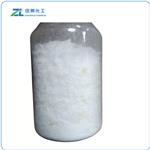4-isopropylcyclohexanol has been suggested for use in perfume compositions on
account of its power, low cost, and stability in
soap. It has acceptable effects upon Lavender,
Pine and even on Rose type fragrances for
such purpose, but it needs proper blending
with sweetening materials of similar volatility,
e.g. Linalool, Phenylethyl alcohol, Anethole,
Citronellol, esters, etc. It blends well with the
conventional Fougère materials and with
many of the newer Cyclohexane derivatives.
1) by hydrogenation of para-iso-Propyl phenol.
2) by electrolytic reduction of Cryptone,
which can be obtained as an isolate from
Eucalyptus oil fractions or certain Pine
needle oils.
4-isopropylcyclohexanol (4-iPr-CyH-OH), a novel analgesic compound , which inhibited TRPV1, TRPA1, TRPM8, TRPV4 and ANO1, as well as mitigated capsaicin-induced pain-related behaviors in mice. Moreover, the absence of an agonist effect for 4-iPr-CyH-OH on these five channels may reduce side effects and dosages[1].
[1] Yasunori Takayama, M. Tominaga, H. Furue. “4-isopropylcyclohexanol has potential analgesic effects through the inhibition of anoctamin 1, TRPV1 and TRPA1 channel activities.” Scientific Reports (2017).



